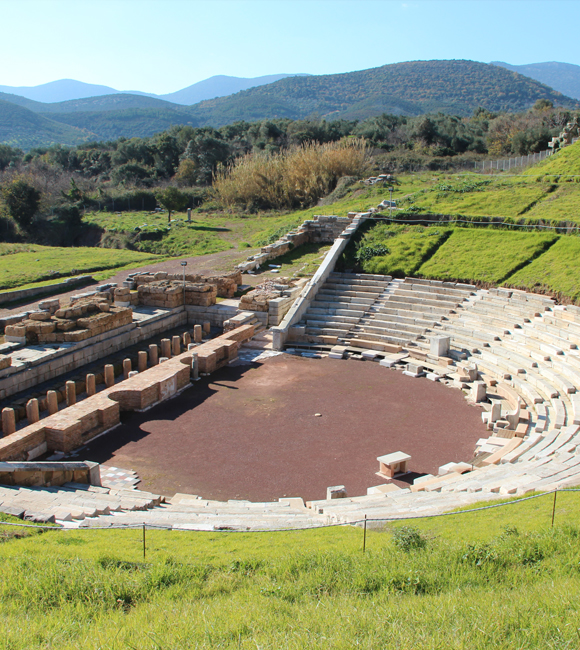Ancient Monuments
Euripides called Messinia “Kallikarpo” (meaning ‘fine fruit’) due to its abundant crystal clear waters, excellent pastures, a cool summer and mild winter. Messinia is mentioned by Homer in the Iliad.
Messinia, which spans across 2,990 square kilometers, continues to be a fertile land with a wonderful climate in the southwestern tip of the Peloponnese. Endless beautiful beaches with sand, pebbles, or rocks, picturesque bays, unique islands and beautiful seaside villages. Further inland, its fertile meadows and quiet villages are nestled in the mountains. A place with a rich history that is evidenced by archaeological sites, castles, towers, Byzantine and post-Byzantine monuments (churches and monasteries). Calm nature, “sweet” climate, unique monuments.
History:
Its first inhabitants were the Leleges, who were ruled by Queen Messini. After the descent of the Dorians into the Peloponnese, they invaded Messinia in 743 BC, which marked the start of Messinian Wars. After their defeat by the Spartans, many Messenians fled and settled in a Sicilian town, which they named Messini. The Messenians remained under the sovereignty of the Spartans until 371 BC, while in 146 BC Messini was occupied by the Romans and from 395 AD they suffered attack by Goths, Avars and Slavs. In 1205, Messinia was occupied by the Francs, and was first to take part in the Revolution and was liberated in 1828. The olive cultivation is an ancient tradition in Messinia and in Kalamata and their famous oil is an excellent product. Other products that are produced in the area are figs, raisins, wine, ouzo, raki, mastic, nougat. The Kalamata kerchief.
Archaeological Sites – Monuments:
Significant historical and archaeological sites include Ancient Messene (Ithomi), the Palace of Nestor (Chora), the Neolithic acropolis of Malthi (Dorio), the acropolises at Nichoria and Ancient Aipeia (Petalidi), the palace of early Helladic period and homeric acropolis of Fira (Kalamata), the vaulted (Mycenaean) tombs of Peristeria (Kyparissia), Nestor and Volimidia (Chora), of Thrasymedes (Voidokilia), at the Osmanaga Lagoon (Koryfasio), the archaeological sites at Kaplanis (Akritochori), Metsiki (Ano Psari) and Anthia. The most significant castles are those of Koroni, Methoni, Pylos (Niokastro and Palaionavarino), Kalamata, Zarnata (Stavropigio) Kyparissia, Androussa. Remarkable Byzantine monuments and monasteries include Andromonastiro (Petralona), the monasteries of Voulkanos (Mavrommati), of Dimiovia and Velanidia (Kalamata), of Samarina (Androussa), of Androbevitsa (Stavropigio), of the Saints Konstantinos and Eleni (Kalamata) and Mardakio monastery (Mt. Taygetos).
- I. The theater of Ancient Messene.
More
- II. The Palace of Nestor.
More
- III. The monument of the Greeks that fell at the Battle of Sfaktiria.
More
 Robotic Rehabilitation
Robotic Rehabilitation Physiotherapy Rehabilitation Centre
Physiotherapy Rehabilitation Centre Therapeutic horseback riding
Therapeutic horseback riding Hydrotherapy
Hydrotherapy Occupational Therapy
Occupational Therapy Speech Therapy
Speech Therapy Psychological support
Psychological support Isokinetic dynamometry
Isokinetic dynamometry Nutrition & Dietetics
Nutrition & Dietetics Diagnostic units
Diagnostic units Gait Analysis – Foot Pressure Measurement
Gait Analysis – Foot Pressure Measurement Chronic Disease Management Clinic
Chronic Disease Management Clinic Special Outpatient Clinics
Special Outpatient Clinics Social service
Social service














